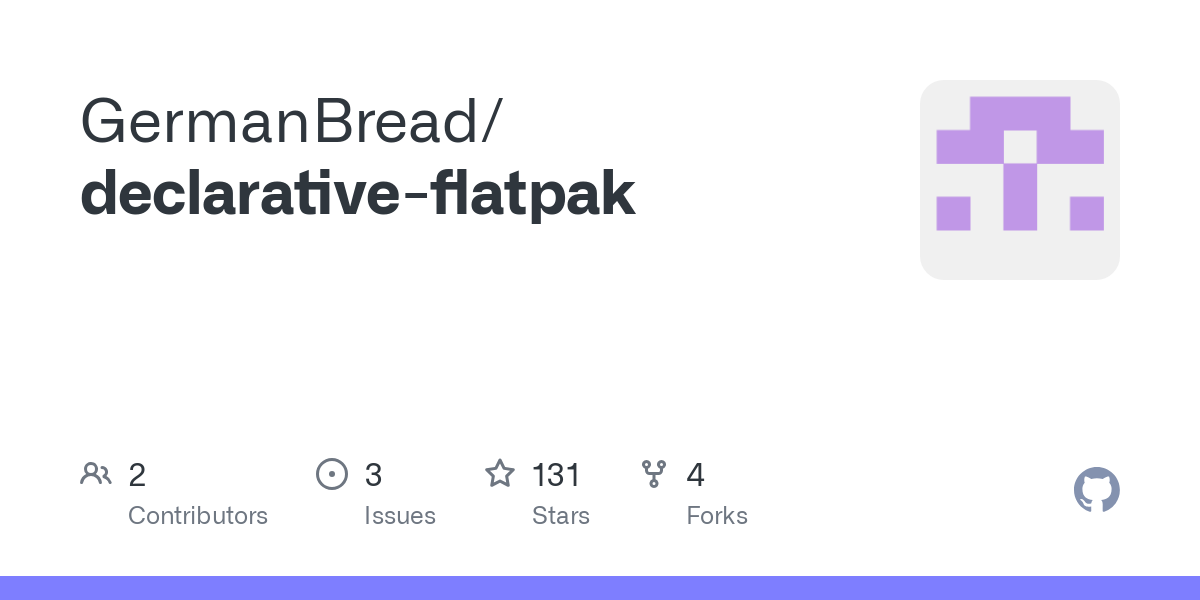- 12 Posts
- 59 Comments

 4·23 days ago
4·23 days ago~/repo for code I write and ~/src for code I didnt.

 6·25 days ago
6·25 days agoI used Zola for a while, but at the end of the day there wasnt enough themes available that fit what I was looking for. I ended up messing with the templating engine to get what I needed.
I suggest OP choose Hugo over Zola, in the hopes that they find a theme that suits them best and for the most part prevents them from having to touch templating to begin with.
Where’s the tailscale fork? Thats my current battery sink
Paperlessngx will store pdfs and index their contents for searching. It’s not necessarily meant for books but I think it would work.

 1·1 month ago
1·1 month agoI used an ai painting pkugin before…never considered others! I’ll take a look.

 2·1 month ago
2·1 month agoI love use tools like mermaid or plantuml. But Ive always faught with formatting (or gave up) instead of editing after the fact. Great idea?
In the same vein, I use draw.io to make architecture diagrams and flow charts.

 3·2 months ago
3·2 months agoI forgot about Asesprite! Thats a great tool.
Aseprite was originally licensed under GPL but later made propretary. The fork of the last GPL version is called Libresprite but it doesnt have much activity, I dont think.

 6·2 months ago
6·2 months agoI’ve been meaning to get into some image generation type things too. The best self hosted tool I know of is InvokeAI. I’m sure there could be a whole other post (or other community) about image generation tools.
I recently built a site with hugo. Its very easy. You pick a theme, then write some markdown files. And when you need flexibility, you have it for later. I also think it’s the most popular right now, which lends to a lot of themes to pick from and a lot of cpmmunity support.
There are a few out there, but this is the one I use by GermanBread: https://github.com/GermanBread/declarative-flatpak
Edit: this is probably worth making its own post about
I use a declarative flatpak flake that lets me install flatpaks declaratively. You could use this as well, in case you want to manage the flatpaks in your configuration.
Which app menu? I use gnome and after a restart I see my flatpak apps in my app drawer.
Thats a great idea. Theres lots of Foss cad tools, and Im sure they have plenty of flexibility even when contrained to 2d.
Use a raid atrray, and replace drives as they fail. Ideally they wouldnt fail behind your back, like an optical disk would.

 3·2 months ago
3·2 months agoI’ve used minio briefly, and I’ve never used any other self hosted object storage. In the context of spinning it up with docker, it’s pretty easy. The difficult part in my project was that I wanted some buckets predefined. The docker image doesn’t provide this functionality directly, so I had to spin up an adjacent container with the minio cli that would create the buckets automatically every time I spun up minio.
But for your use case you would manage bucket creation manually, from the UI. It seems straight forward enough, and I don’t have complaints. I think it would work for your use case, but I can’t say its any worse or better than alternatives.

 1·3 months ago
1·3 months agoHas anyone ever used the enterprise version of dbeaver? Does it do as good a job interfacing with nosql databases it does relational databases?

 3·3 months ago
3·3 months agoThanks for keeping the Lemmy community up to date. Its been cool hearing about how youve grown this project from engine to website to online cloud platform and now a game cohesive enough to sell to a casual steam audience. Congratulations on this achievement. Your passion for backgammon, and this bgammon project, is inspiring.
mynixos.com also lets you navigate nixpkgs.

 2·4 months ago
2·4 months agoCan you post a pic of your DE? Im curious to know what your cinnamon looks like.


I lean on nixos modules first, but half the time it either doesnt exist or its too complicated at first glance. So I will manually create an oci-container configuration by referencing a docker compose on the projects site. For simple compose files this is easy. Sometimes its not easy, and I dont end up deploying it.
I’ve been wanting to find or build a method that lets me drop a compose alongside ny config and have nix load the yaml and build the oci-container configuration for me. That would be nice since Im familiar with compose syntax and it’s usually easier to write imo.